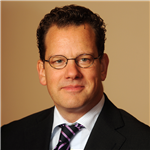 Human Resources has been through a tough development process over the last 25 years. During this timeframe the Top Employers Institute has been active in this field, examining what employers offer their employees. Together with David Plink, CEO of Top Employers Institute we want look back at what has changed, from his point of view, and how the Top Employers Institute has evolved in relation to these changes.
Human Resources has been through a tough development process over the last 25 years. During this timeframe the Top Employers Institute has been active in this field, examining what employers offer their employees. Together with David Plink, CEO of Top Employers Institute we want look back at what has changed, from his point of view, and how the Top Employers Institute has evolved in relation to these changes.
From the perspective of the Top Employers Institute, how would you summarise the biggest changes in the field of HR between 1991 and 2015?
“Twenty-five 25 years ago, companies tended to focus on the transactional component of HR, such as basic elements like the payment of employees and their performance. Typical topics that were mentioned in the Human Resource Management Review in 1991 included job evaluations and pun-ishing dysfunctional behaviour and sexual harassment. Nowadays, you can see that companies are increasingly shifting towards a more conditional HR perspective. They want to create the right con-ditions that will enable their employees to excel. In 2015, Top Employers regard attraction, en-gagement and the retention of talent as key issues and top priorities. The dynamics are changing and competencies are becoming more important, now and into the future. Technology supports individual development processes and, simultaneously, we can see that company strategy is in-creasingly being aligned with both the business reality and employees’ preferences and needs.”
Which milestones would you single out as significant in terms of the growth of the Top Employers Institute?
“In 1991, we started as a publishing company called the CRF Institute. Our interest in the areas of HR management, policies and practices expanded with a view to seeing what companies were offering their employees and, in 2005, we decided to focus on employee conditions in a standardised manner. As a certifier of the employee conditions that employers create for their staff, we introduced Continental Certification to Europe in 2010. Our last book about the outstanding companies was published in 2011 and, from that point on, we began focussing entirely on certification. As a certifying body, it was the logical next step for us to certify employee conditions worldwide in order to ensure that people are able to develop both personally and professionally across the globe. In order to align and harmonise all aspects, including processes and our methodology, we also changed our company name to the Top Employers Institute.”
So, what are the plans for the future?
“We are expanding our global presence and will open offices in the US and Brazil next year.”
Can you tell us more about Global Certification?
“We would like to give companies an opportunity to be certified regardless of their location. Employers must create the right conditions for their employees around the world. Optimal employee conditions are not exclusive to 1st world countries; they are applicable on a global scale.”
Your brand essence is to develop. Always. What is your personal vision of the partnership between employers and employees?
“Employers can only develop and grow though their employees. Therefore it is their responsibility to continuously advance the development of their people. Development of employees and employers go hand in hand and can’t be separated from one another.”
If you could turn back time, is there something that the Top Employers Institute would do differently?
“Rien, je ne regrette rien…..”



